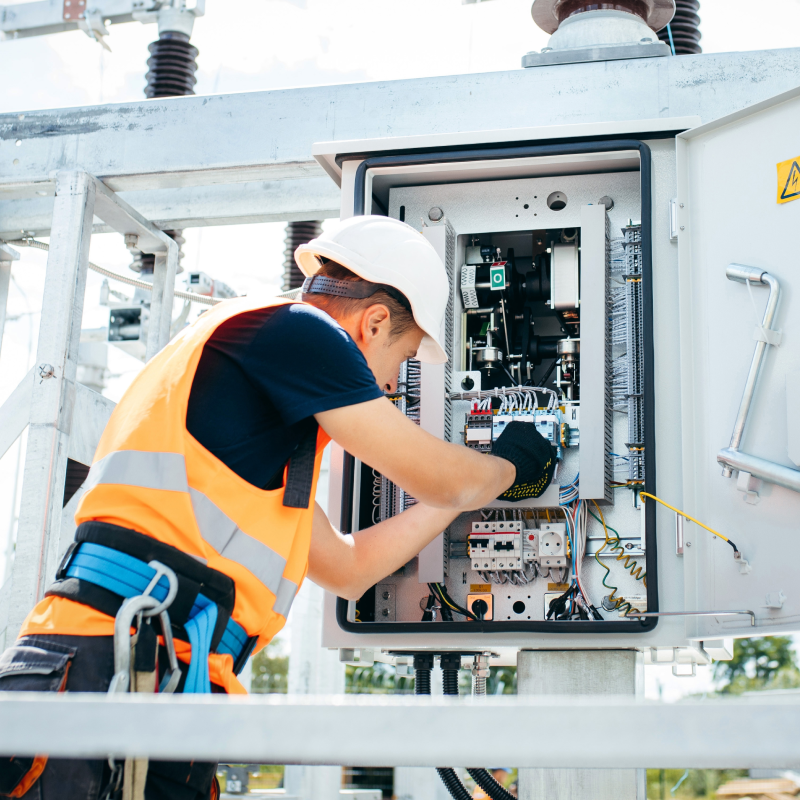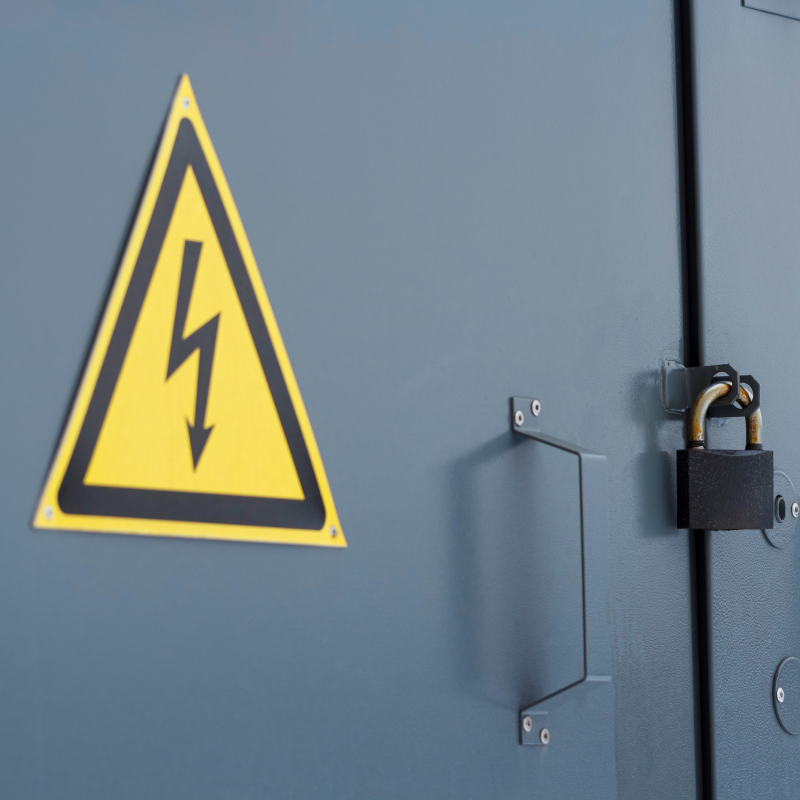Preventing Workers Compensation With Electric Equipment Guarding and Workspaces
Electrical current is found in power lines, transformers, breaker boxes, and power outlets and switches. Exposure to electric current can cause shock, injury and electrocution. Workers that service electrical sources need to get training on electrical safety, assume electrical equipment and lines are live, and use lock out/tag out procedures. And proper guarding and clearance around electrical equipment can prevent accidental worker exposure to electrical currents.

A shock can occur when a worker’s body becomes part of the flow of an electrical circuit. The severity of injury depends on the voltage and time that the electrical current passes through the body. Low voltage causes pain and slight burns, however, a high voltage can cause severe burns or stop the heart (and a minor shock may cause a significant injury if a surprised worker takes a fall).
The good news is that there are a few equipment storage and workspace techniques that can help prevent the risk of accidental shock and injury that may lead to workers compensation. For example, live electrical components operating at 50 volts or more must be guarded with covers or other permanent barriers to prevent accidental contact by workers and their tools. Equipment can also be locked behind an enclosure, in a room, or at an elevated height. These areas should have restricted access and warnings against unauthorized entry. Permanent markings on electrical equipment with the voltage, current or wattage provide power output information for workers.
Electrical boxes and equipment are best stored in areas free from moisture, chemicals, and excessive temperatures. Electric cabinets with ventilation holes need to remain clear to allow air circulation. Electric parts that ordinarily spark or arc require covers and isolation from combustion sources, and equipment should always be securely mounted to the surface that it rests on.

When it comes to an adequate working space, there should be enough room to allow workers to safely maneuver around electrical equipment. Electrical equipment with a voltage of 0-150 requires 36 inches of clearance, whereas a voltage of 150-600—where there are energized parts on one side—also needs 36 inches of clearance. Equipment with a voltage of 150-600 and exposed energized and grounded parts on either side requires 42 inches clearance; equipment with exposed energized parts on both sides must have 48 inches clearance.
It’s also important to note that the clearance workspace around electrical equipment is not intended for storage. The area should be kept clear to allow safe movement and to prevent a fire hazard. Electric equipment workspaces require adequate lighting for safe work; light operating switches should not be near live electrical feeds. Enclosures need at least one entrance and enough headroom to work safely.
With adequate clearance and guarding around electrical equipment, workers can avoid accidental exposure to electric shock, and workers compensation could be avoided altogether.
Take the Next Step in Protecting Your Employees and Your Business
Let McGowan Allied Specialty Insurance tailor a solution that can safeguard your employees, protect your bottom line, and keep the good times rolling. Contact us online or call our team at 727-547-3023 to get your free, personalized quote today.
